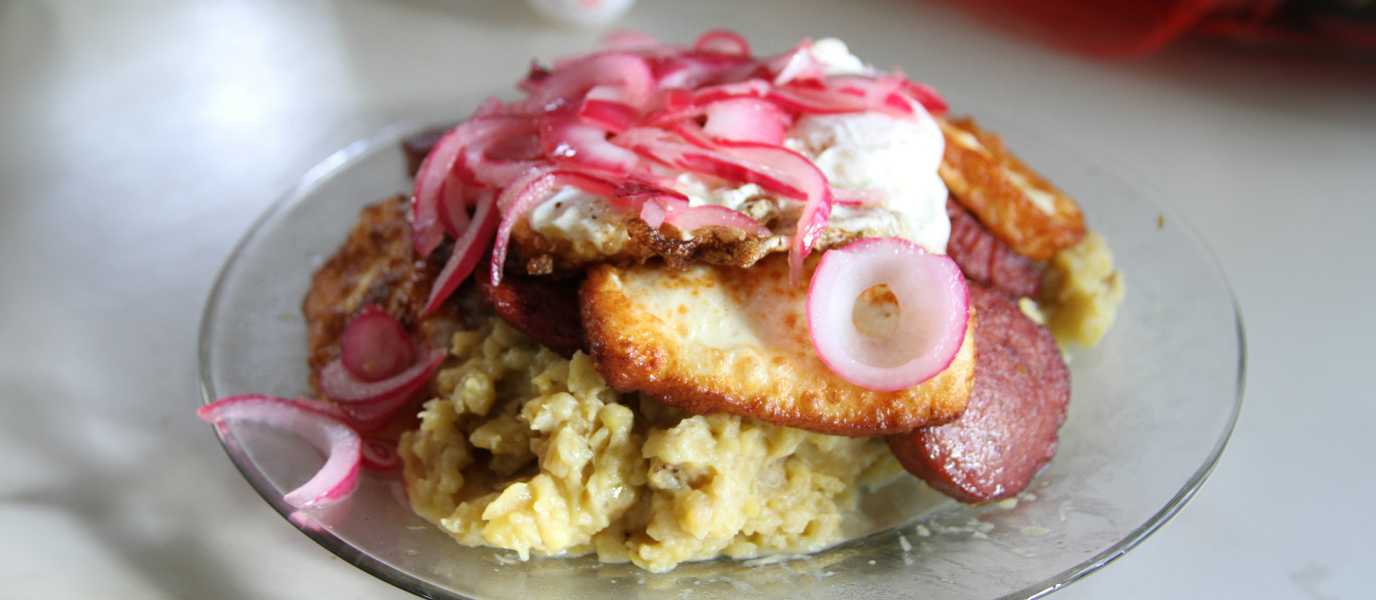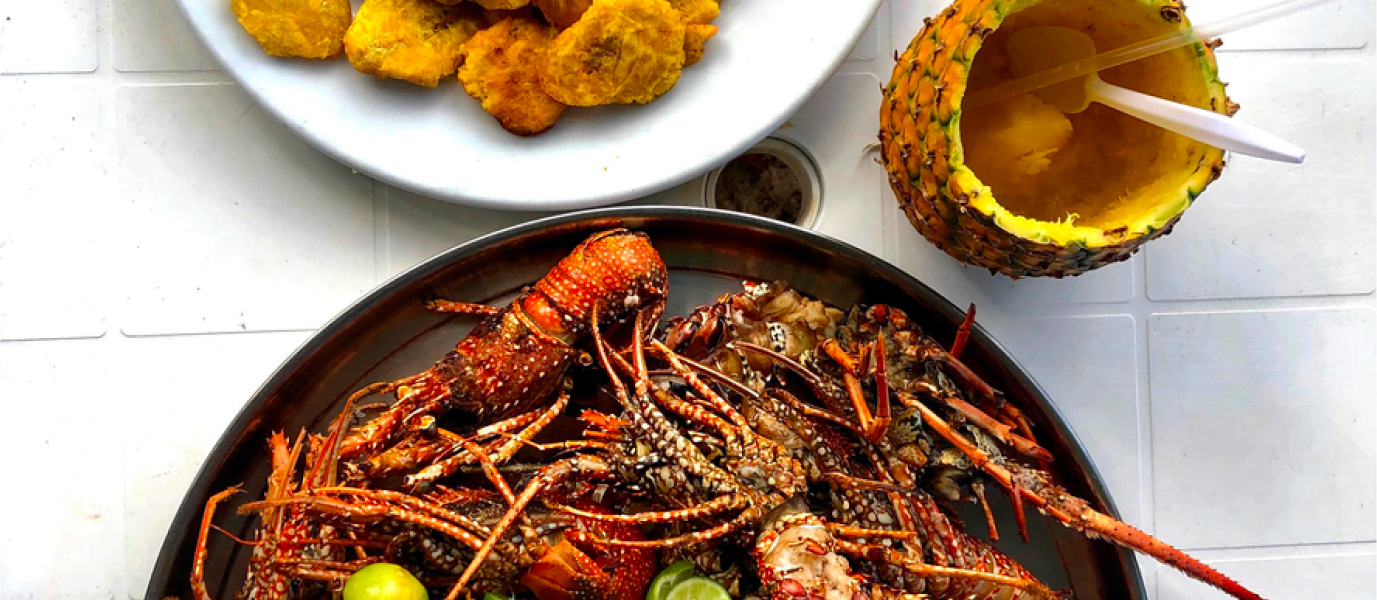They say that the way to a person’s heart is through their stomach, so based on this, traditional food from the Dominican Republic will make anyone fall madly in love with this Caribbean nation. A combination of recipes and ingredients of native Tainos, Spanish conquistadors and African slaves, seasoned with flavors from around the world, Dominican cuisine reflects the country’s rich history, culture, traditions and identity.
In 2018, and once again in 2019, the city of Santo Domingo was named a Culinary Capital of the Caribbean by the Ibero-American Academy of Gastronomy. This honor not only recognizes the quality of Dominican food, but it also highlights the importance of traditional recipes as an essential part of the nation’s culture. In other words, every dish has a bit of soul of this amazing destination.
Visiting the Dominican Republic entails discovering all of its flavors: the tubers and tropical fruits of the Taino people; the beef, pork, oregano and saffron brought on Spanish ships in the 15th century; and the techniques and ingredients (such as bananas and yams) of African slaves, resulting in local dishes such as mofongo and mangú. Traditional Dominican food is a fusion that makes anyone’s mouth water.
Sancocho, a stew with seven types of meat
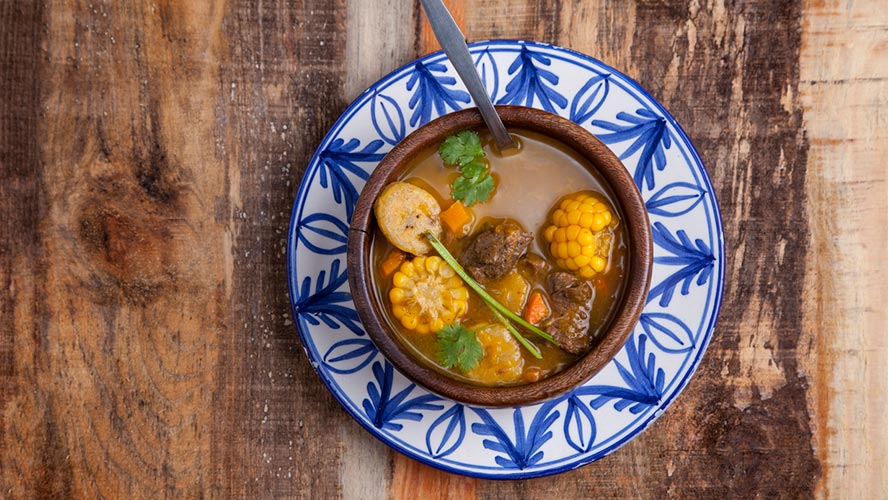
Sancocho, one of the nation’s most typical dishes, is served at parties and special occasions such as New Year’s. This thick stew is made with several ingredients: meat, vegetables, tubers and condiments. It is always served with white rice and sliced avocado, but like any traditional dish, there are different versions.
“Classic” sancocho is made with several types of tubers and other edible plants grown in the Dominican Republic, such as yam, squash, malanga (yautia) and yucca. Other ingredients include diced corn on the cob, garlic, lemon juice, green plantain, cilantro, oregano, salt, oil and more. It can be whitish if made only with chicken, or dark-colored when several types of plantain are added along with beef, goat and pork. Another variant is sancocho with green pigeon peas or red beans. Finally, there is the house specialty: sancocho de siete carnes (seven-meat stew), which has chicken, pork, beef, goat, Creole chicken, smoked ribs and chops, and longaniza sausage. A party for authentic carnivores! By the way, Dominicans say that sancocho is a great hangover cure. Could this be true?
The Dominican flag, the national dish
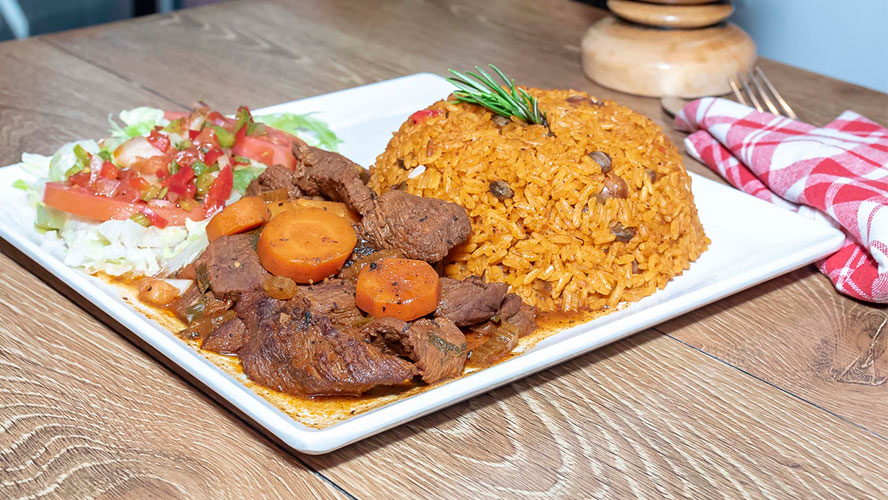
The king of all Dominican recipes, the most famous and traditional dish, is la bandera dominicana (the Dominican flag). Three basic ingredients—white rice, red beans and stewed meat (chicken or beef)—serve as the foundation, to which all types of “accessories” are added, such as avocado, tostones (flattened fried plantain), green salad with tomato, or cooked eggplant stew, to name a few.
La bandera is the meal that is eaten the most often in Dominican homes and also appears in the set menu of many local restaurants. In line with its name, this dish is inspired by the national flag: the rice is white, the beans are red and the meat (with a bit of imagination) is blue.
Mangú, easy and delicious
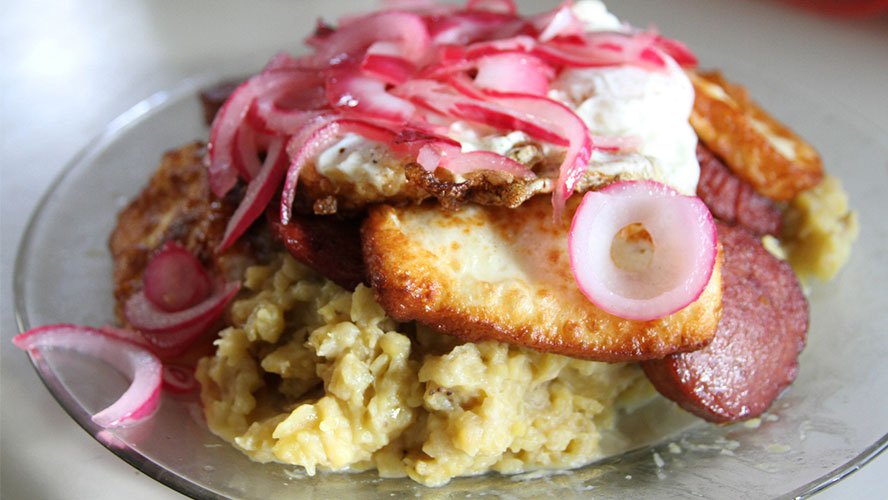
Another traditional Dominican dish is mangú, which is simply mashed green plantains. The preparation is just as basic: boil or stew the plantains in salted water, and then mash them with a bit of oil or butter, and a trickle of water if necessary, creating a smooth purée with no lumps. Mangú is usually topped with red onion sautéed in oil and vinegar.
Inherited from the African slaves who were brought to the Dominican Republic from the Congo region, mangú is also a key part of los tres golpes, the par excellence Dominican breakfast consisting of mashed plantain served with fried white cheese, fried eggs (or sometimes scrambled eggs with onion and bell pepper), avocado and fried Dominican salami. It’s a great way to kick off the day!
Dominican rice, standard on every table
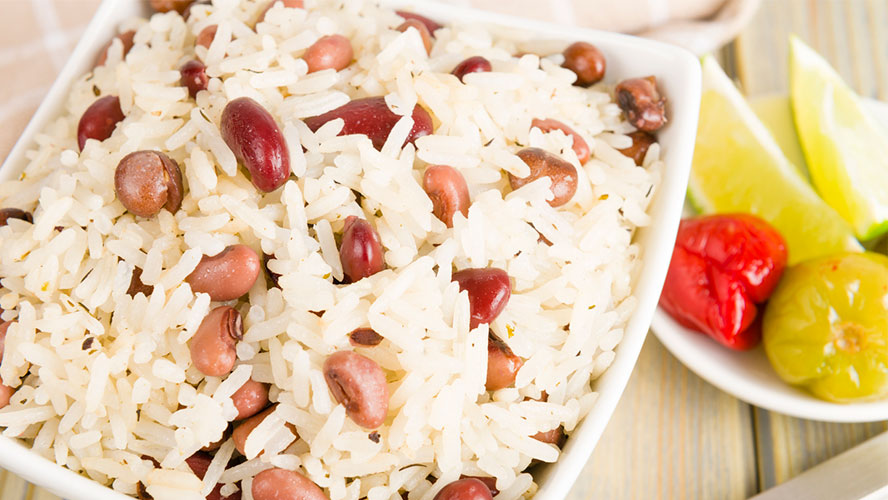
Rice—which was imported by the Spaniards, who in turn inherited it from the Arabs—is one of the most important ingredients in traditional Dominican cooking. This age-old grain tends to be present at every table in the country, either as a side dish or as the main course, from the most standard version of all (white rice), to the countless combinations in traditional recipes (with chicken, pigeon peas, beans, mango, noodles, vegetables, seafood, etc.).
Although the importance of rice is made completely clear in la bandera dominicana, this ingredient is also used in many other recipes. One example is locrio de pollo, or rice with vegetables and meat (beef, fish, chicken or seafood), to which tomato sauce or axiote is added for a hint of color. Other dishes include the classic moro de habichuelas, which is basically rice and beans, pastelón de arroz (rice casserole), rice with noodles, rice asopao (gumbo), chofán (the Dominican version of Chinese fried rice), rice salad, and just about anything your imagination can conceive.
Mofongo, an African gift
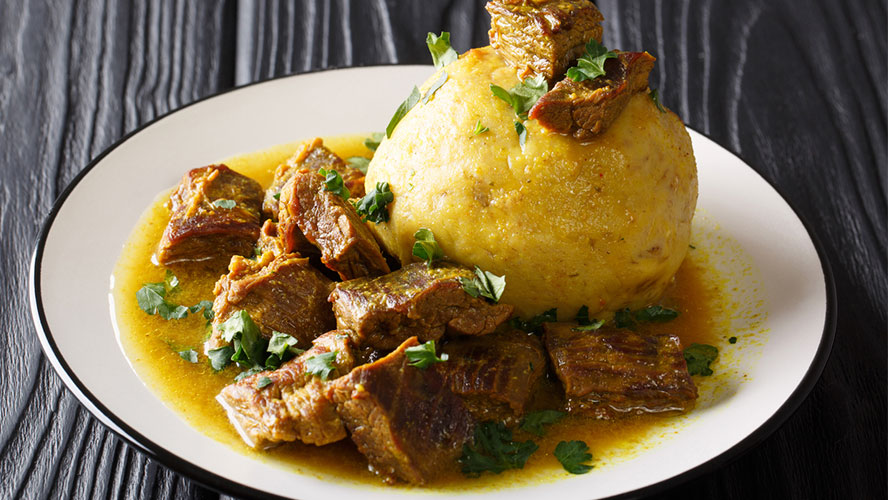
Dominican cuisine was gifted a truly delightful legacy by its African roots: mofongo. This traditional delicacy is made by mashing fried plantain, garlic and pork rind in a mortar, forming a dough that is then shaped into small balls, like ice cream, and served in a bowl. This dish is sometimes paired with shrimp or a piece of avocado, or dipped in meat broth right before eating.
Mofongo is available at pretty much any Dominican restaurant, and it can be eaten as a side dish or the main course, depending on the portion size, and for lunch or dinner. It is also quite common for people to top off a night out on the town with this irresistible traditional dish.
Tostones, perfect anytime
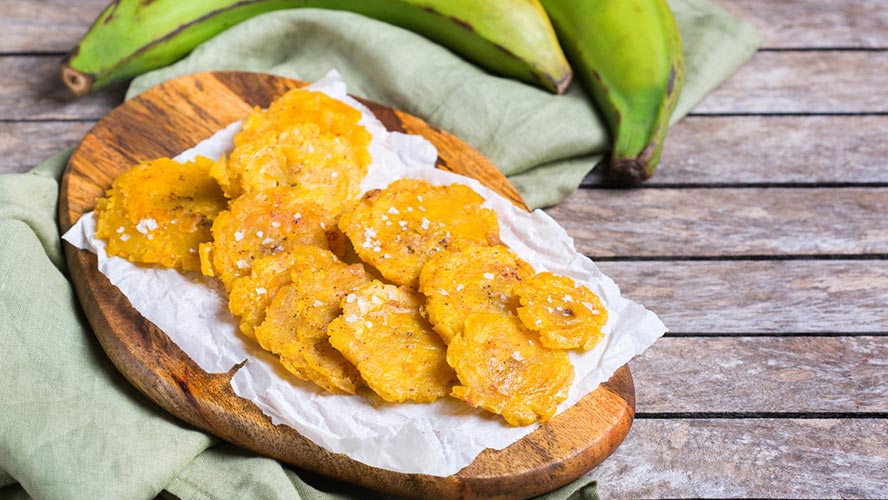
Plantain slices, fried and smashed, served crispy and salty. Nothing is as easy and mouth-watering! Tostones (sometimes referred to merely as fritos) are extremely versatile: they can be served as a side or eaten alone, just like fries; dipped in sauce for a quick bite; made for breakfast, lunch or dinner, or a snack at any hour.
Tostones are extremely popular in the Dominican Republic, but similar versions also exist in other Latin American countries such as Cuba, Colombia, Nicaragua and Ecuador. It’s no surprise that everyone loves these pieces of fried plantain!
Fried fish, the flavor of the sea
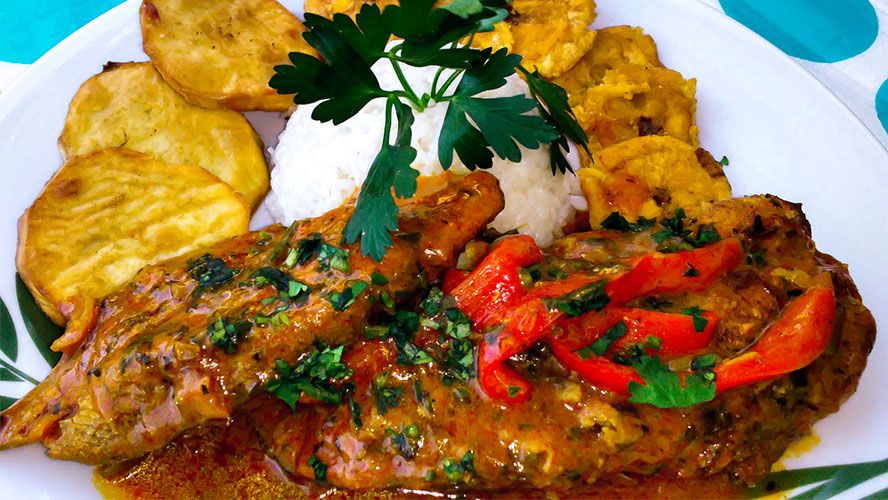
The Dominican Republic is located on a Caribbean island. This means that fish and seafood are a huge part of Dominican cuisine. From Punta Cana to Samaná, and from Santo Domingo to Puerto Plata, any spot along the nation’s coastline is home to amazing seafood.
When it comes to fish and seafood in the Dominican Republic, there are many excellent alternatives for a great meal, from grilled lobster to a vast array of fish stews. But one of the most popular Dominican recipes is fried fish. A truly authentic Dominican day at the beach would not be complete without this crowd-pleaser, which is usually made with grouper or snapper, directly from sea to table, and served with a side of…can you guess it? Tostones, of course!
Street food yaniqueques

Whether you are visiting a city or spending the day at the beach, a traditional yaniqueque is perfect anywhere and anytime. This round and crispy flour fritter is one of the country’s most typical street foods. And just like almost everything in Dominican cuisine, there are many versions.
The most common is savory yaniqueque, round, like a tortilla the size of a plate, more or less. Smaller ones also exist, and these are usually eaten with hot chocolate for breakfast or as a snack. There are also filled versions, such as with cheese, egg, ham, vegetables or chicken, and some are even folded in half, like turnovers. But any way you eat it, a yaniqueque is the perfect street food.
Habichuelas con dulce, leave room for dessert
There is more to Dominican cuisine than just savory dishes. Sweets are also important, and one of the country’s most popular desserts is habichuelas con dulce, or sweet beans. Usually eaten during Lent and Easter, this Dominican recipe is quite interesting because it consists of boiled and puréed red beans, mixed with evaporated milk, condensed milk, coconut milk, sweet potato, butter, cinnamon, sugar, vanilla, clove, anise, nutmeg and raisins. This dish is anything but short on calories, but the taste is well worth it.
Like other traditional Dominican recipes, desserts also reflect the nation’s rich history. The spices and wheat flour that arrived from Europe were mixed with tropical fruits and other typical American ingredients, like coconut and corn. The result is a country whose population has quite a sweet tooth.
Jugo de chinola, for people who love fruit
Speaking of typical fruit in the Dominican Republic, this tropical country boasts a wonderful collection of flavors. Bananas are perhaps the most famous, but there is also papaya, passion fruit (chinola), mango, sapote, soursop, tamarind, coconut, pineapple, guava, star fruit and many more.
Amazing fresh fruit can be found at any restaurant or outdoor stand, along with all types of fruit-based desserts and drinks. One of the most traditional is sweet and refreshing jugo de chinola (passion fruit juice), which is said to have many health benefits. If you sip on one of these juices while basking on the beach in the Dominican Republic, any ailments you have will surely disappear.
Discover the origin of irresistible Dominican flavors
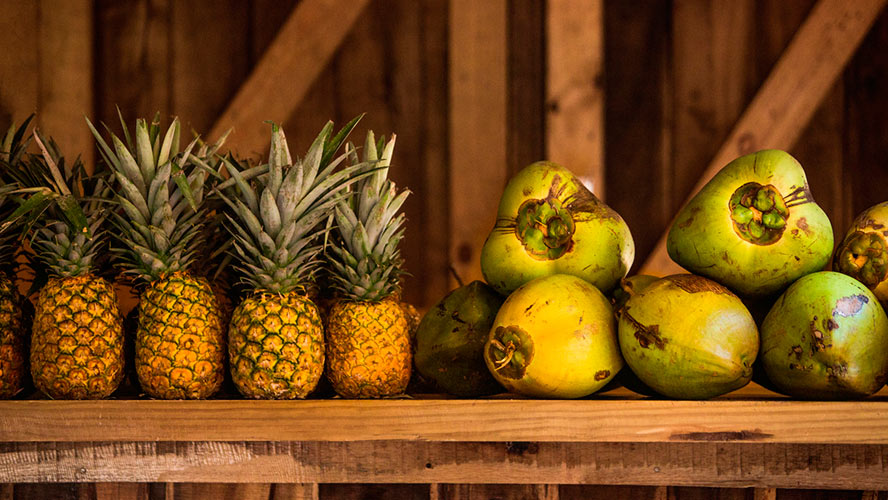
A trip to the Dominican Republic should always include trying the amazing local cuisine, and this can be done at restaurants or at street stalls and picturesque markets. A great way to savor the country’s flavors is to learn more about the origin of some of its most popular products, such as rum, coffee, cacao and more.


























































